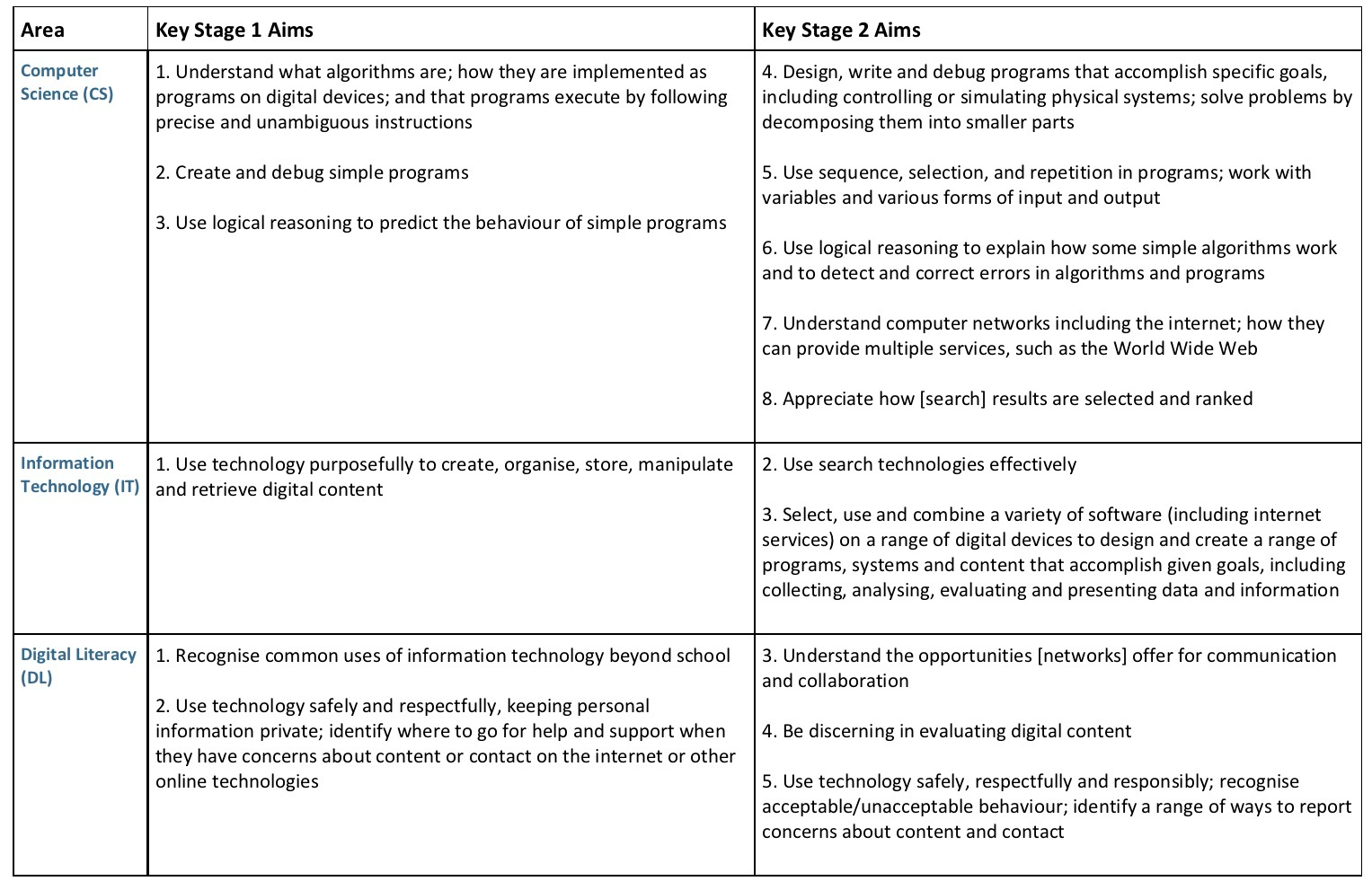Computing
Computing is concerned with how computers and computer systems work, and how they are designed and programmed. Pupils studying computing will gain an understanding of computational systems of all kinds, whether or not they include computers. Computational thinking provides insights into many areas of the curriculum, and influences work at the cutting edge of a wide range of disciplines.
The National Curriculum presents the subject as one lens through which pupils can understand the world. There is a focus on computational thinking and creativity, as well as opportunities for creative work in programming and digital media. There are three aspects of the computing curriculum: computer science (CS), information technology (IT) and digital literacy (DL).
Computing Scheme of Work & Planning– Key Stage 1 and Key Stage 2
Computing has been divided into three areas:
Computer Science
Information Technology
Digital Literacy (which includes eSafety).
The aims for the computing curriculum has been categorized into these three areas, detailed below.
Digital Literacy has been broken into two areas, Digital Creativity and Digital Citizenship & Technology. This is to ensure that we cover each of the areas of what is a vast subject area and offer a balanced curriculum to children.
This is demonstrated in the diagram below, this time instead of linking to the program of study we have given examples of skills children will develop in covering these topics.
INTENT
At St Patrick’s Primary School all our curriculum subjects are linked to our school vision and values. We want to ensure that our children are prepared for the modern world and develop values that will help them be responsible citizens of the future. With this in mind, we have developed our computing curriculum to not only develop their computing skills, but educate our pupils on how to use technology positively, responsibly and safely.
Our computing curriculum is based on the NCCE Computing units, Teach Computing: https://teachcomputing.org/
This scheme is a coherently planned programme by the DfE which fully covers the requirements of the National Curriculum and is sequenced to allow children to build upon their computing knowledge as they progress through each year of school.
Each year group from Year 1 to Year 6 have 6 units of work covered throughout the year. E-safety is covered at the start of the term in KS1 and every half term in KS2. Common sense education lessons are used to teach e-safety: https://www.commonsense.org/education/uk/digital-citizenship
In EYFS, although ‘technology’ is no longer partof the statutory curriculum the skills listed in the LT plan are needed before children access the National Curriculum in Y1.
Technological toys (toys will buttons, flaps cause and effect), cameras, touch screen computers, torches, telephones etc are still used and promoted within the Early Years as often as possible in adult directed tasks as well as being freely in the environment for children to explore.
These skills will be taught through a range of adult led sessions and through child initiated play in the environment. These skills will be revisited through the year and children are not expected to learn in a linear way.
The EYFS skills will be taught through a topic approach based on children’s interests and adult chosen topics. Continuous provision is set up within the environment with suitable equipment to ensure children can learn to be independent and explore and develop skills through their
free play. Environments are carefully thought out to provide stimulating challenge to further develop skills.




